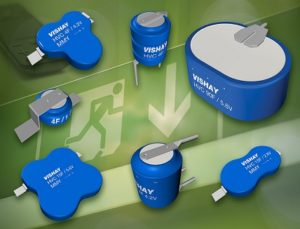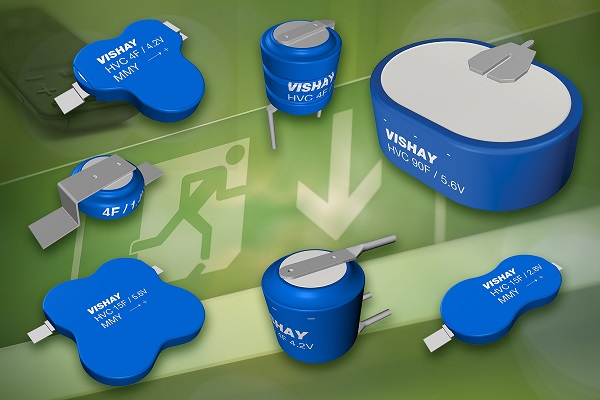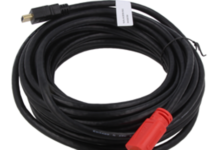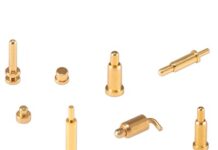
The Hybrid Energy Storage Capacitor’s Story
Hybrid energy storage capacitors were created to give designers an energy storage solution that overcomes the limitations of rechargeable batteries on the one hand and supercapacitors on the other. Devices are available with low 2.5 mm profiles, low self-discharge, and energy density of 13 Ws/g. Offering designers exceptional flexibility and enhanced charge and discharge performance for energy harvesting and power line backup applications, the capacitors are available with a wide variety of layouts, capacitance values, and voltage ratings.
CPAP machines with a power-outage alarm are just one of many types of devices that need a temporary energy supply when the mains connection is no longer available. Rechargeable batteries can be used for these systems but their limited number of charge/discharge cycles could mean that they wear out before the machine’s end of life. Double-layer supercapacitors offer high power density and unlimited charge/discharge cycles but they require more volume to support a power requirement exceeding 100 mW for more than a few seconds. Hybrid energy storage capacitors give designers the best of both worlds: combining the advantages of classic batteries and dual-layer capacitors without their limitations.
User Experience: A CPAP Alarm Feature Brings Better Sleep—And More Peace of Mind
Joanna’s story
Just before 2 a.m., Joanna awakened from deep sleep at the sound of the CPAP machine’s alarm. “It’s the electricity again!” she thought drowsily. She sat up in bed and removed her CPAP mask. Power outages were a regular occurrence in her Upper Michigan community. A longtime CPAP user for her sleep apnea, Joanna used to worry about what might happen if the machine lost power during the night. Would she wake up on her own? Would her body “remember” to keep breathing if she didn’t? Although her old CPAP machine worked well, the new machine was giving her more peace of mind. Already it had woken her up during three power outages. Just knowing she could rely on its alarm was helping her to sleep even better.
| GLOSSARY
Sleep apnea: a sleep disorder that causes people to pause their breathing or breathe in a shallow manner during sleep, significantly reducing the quality of sleep. Approximately 3 % to 7% of adult men and 2 % to 5% of adult women in the general population are thought to be affected. Continuous positive airway pressure (CPAP) machine: a type of positive airway pressure ventilator, which applies mild air pressure on a continuous basis to keep the airways continuously open in people with sleep apnea. |
Matt’s story
Even with his 15 years of experience engineering various breathing support devices, Matt had difficulties reconciling the requirements from product marketing for his company’s[1] new CPAP machine. Marketing had decided that the new model should be no larger than the previous model, that it should have a humidifier and a power failure alarm that would sound loud and long enough to awaken a user, even from deep sleep.
The tank for the new humidifier used up half the volume that was available for the electronics of the previous model. Originally, Matt intended to use a simple battery box with a few AA batteries to supply the backup power, but the humidifier feature made this impossible.
The alarm required only a few hundred milliwatts of power to work for at least two minutes, according to the specification from product marketing. But if a rechargeable battery were used, it still had to be fairly large to supply the required current. Matt was also unsure whether a rechargeable battery could handle the number of power outage alarm cycles needed for the 10 year life span of the new model.
At one point it seemed as if the best solution would be a high-value double layer supercapacitor. Such a device would fit within the available space and could easily supply the required current, but, to Matt’s disappointment, it would drain too quickly to meet the alarm duration requirement. Also, Matt didn’t like the fact that the system voltage went down when the supercapacitor was discharged. At one point it seemed like he needed an energy storage device that didn’t seem to exist: small in size, with a high current capability that wouldn’t degrade from repeated charge/discharge cycles. Then Matt recalled having read about something called a hybrid energy storage capacitor. In fact he had torn the article out of a magazine and had stored it in his file of “interesting components.”

Finding more product details online, Matt realized the capacitor could solve all his design requirements. It was small and flat and capable of a high number of recharge cycles. Moreover, the device delivered the high energy density, high current handling, and relatively stable working voltage the CPAP design needed. Particularly important for a medical grade end product, there were no hazardous chemicals in the hybrid capacitor’s material composition and no risk of incineration. The next day, Matt ordered device samples and a reference board from the manufacturer. After several weeks of testing that proved the hybrid capacitor’s capabilities, the device was designed into the new CPAP machine—which went on to become a great success on the market.



















